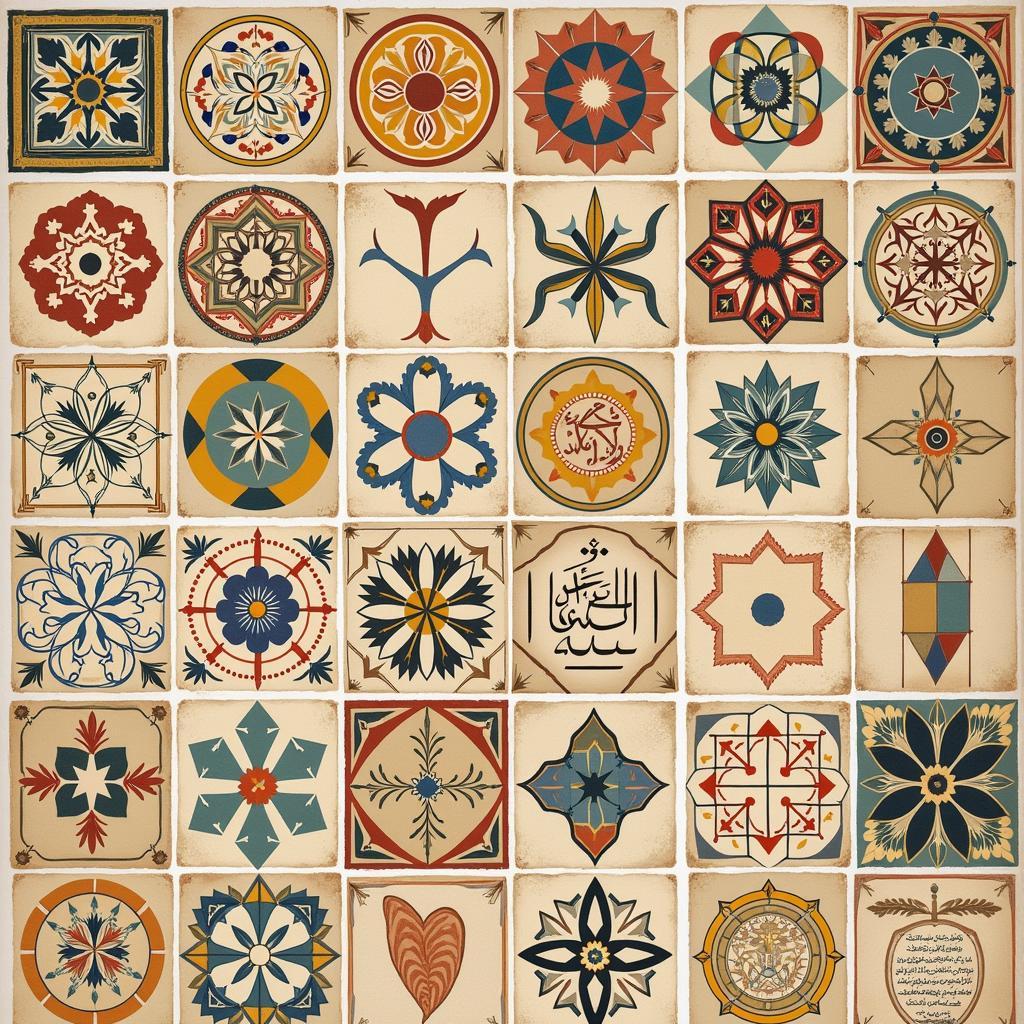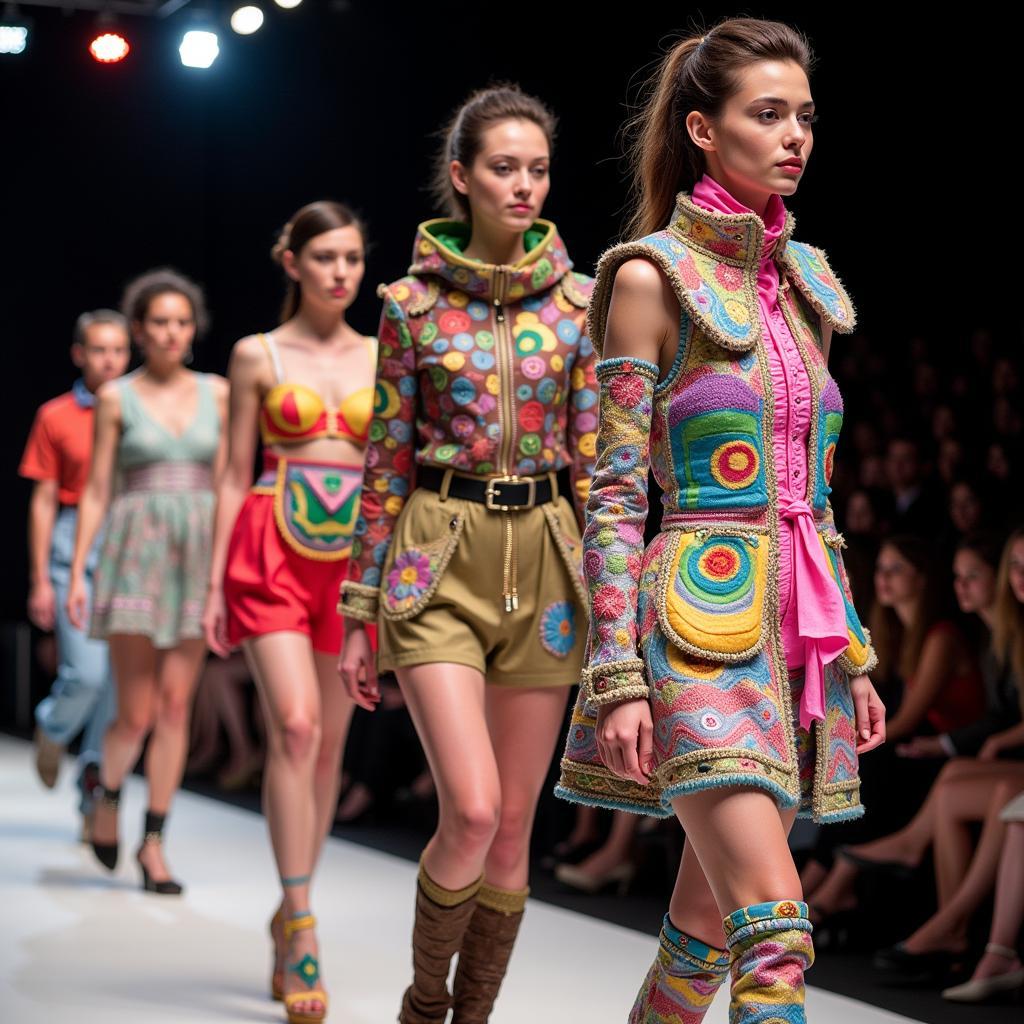Unveiling the Art of Arabia: A Journey Through Rich Traditions
The Art Of Arabia is a captivating tapestry woven with centuries of rich history, cultural nuances, and diverse influences. From intricate calligraphy to vibrant geometric patterns, Arabian art offers a unique window into the soul of a region. This exploration delves into the fascinating world of Arabian artistic expression, uncovering its evolution, symbolism, and enduring impact.
After the rise of Islam, religious constraints led to the development of unique artistic forms focusing on calligraphy, geometric patterns, and arabesque designs. These forms, often found adorning mosques, palaces, and everyday objects, became hallmarks of Arabian art. This early period laid the foundation for the diverse artistic traditions that would flourish across the Arabian Peninsula. Let’s examine some key aspects of this fascinating artistic heritage.
Exploring the Diverse Forms of Arabian Art
Arabian art isn’t a monolithic entity. It encompasses various forms, each with its unique characteristics and significance. Calligraphy, considered the highest form of Islamic art, transforms words into exquisite visual masterpieces. Geometric patterns, with their mesmerizing complexity, reflect the order and harmony of the universe. Arabesque designs, featuring intertwined floral and vegetal motifs, symbolize the interconnectedness of life.
 Arabian Calligraphy and Geometric Patterns
Arabian Calligraphy and Geometric Patterns
The Significance of Calligraphy in Arabian Art
Calligraphy holds a special place in Arabian art, going beyond mere decoration to embody spiritual meaning and artistic excellence. Often used to transcribe verses from the Quran, calligraphy connects the earthly realm with the divine. The elegance and fluidity of the script reflect the reverence for the written word and the beauty of the Arabic language.
From Ancient Petroglyphs to Modern Expressions: The Evolution of Arabian Art
The roots of Arabian art can be traced back to ancient petroglyphs and rock art found throughout the peninsula, offering glimpses into the lives and beliefs of early inhabitants. Over time, the art of Arabia evolved, influenced by various civilizations and artistic movements. The exchange of ideas and cultural interactions with neighboring regions enriched the artistic landscape, leading to a unique blend of traditional and contemporary styles.
How has Islamic Art Influenced Arabian Art?
Islamic art has played a pivotal role in shaping Arabian art, particularly after the spread of Islam in the 7th century. The emphasis on aniconism led to the development of non-representational art forms, focusing on abstract designs, calligraphy, and geometric patterns. These art forms became integral to Arabian artistic expression, adorning mosques, palaces, and various objects. Explore artworks like Anthony Quinn art for sale to understand the global reach of this art.
Unveiling the Symbolism in Arabian Art
Arabian art is rich in symbolism, with each motif and pattern carrying deep cultural and spiritual meaning. Geometric patterns, for example, often represent the infinite nature of God, while floral motifs symbolize paradise and the beauty of creation. Understanding these symbolic elements adds another layer of appreciation to the intricate beauty of Arabian art. You may find beautiful pieces showcasing desert scenes, such as dune desert art.
What are some common motifs in Arabian Art?
Common motifs in Arabian art include geometric patterns like stars and octagons, representing the celestial realm; floral and vegetal motifs symbolizing paradise and abundance; and calligraphic inscriptions conveying religious verses or poetic expressions. These motifs often interweave, creating complex and visually stunning compositions. Perhaps you’re interested in wall art of horses, a common subject in Arabian art.
 Symbolic Motifs in Arabian Art
Symbolic Motifs in Arabian Art
Conclusion: The Enduring Legacy of the Art of Arabia
The art of Arabia, with its rich history and intricate beauty, continues to captivate audiences worldwide. From the ancient petroglyphs to the contemporary expressions, Arabian art offers a glimpse into the cultural heritage and artistic ingenuity of a region. By exploring the various forms, symbolism, and evolution of Arabian art, we gain a deeper understanding of its enduring legacy and its ongoing influence on the global art scene.
FAQ
-
What is the significance of calligraphy in Arabian art?
Calligraphy is considered a sacred art form in Arabian culture, often used to transcribe religious texts and express spiritual devotion. -
What are some common materials used in traditional Arabian art?
Traditional Arabian art utilizes materials such as ceramics, textiles, metalwork, and wood, often adorned with intricate designs and calligraphy. -
How has Arabian art evolved over time?
Arabian art has evolved through interactions with various cultures and artistic movements, blending traditional techniques with contemporary influences. -
What is the role of symbolism in Arabian art?
Symbolism plays a crucial role in Arabian art, with motifs and patterns conveying cultural, religious, and spiritual meanings. -
Where can I learn more about Arabian art?
Museums, art galleries, and online resources offer valuable insights into the rich history and diverse expressions of Arabian art. -
How can I incorporate Arabian art into my home decor?
Incorporating Arabian art into your home can be achieved through textiles, ceramics, wall art, and other decorative items featuring traditional motifs and patterns. -
What are some notable contemporary Arabian artists?
Numerous contemporary Arabian artists are pushing the boundaries of artistic expression, exploring themes of identity, culture, and social commentary through various mediums.
For support, contact us at 02462573573 or [email protected]. Visit us at Savico Megamall, 7-9 Đ. Nguyễn Văn Linh, Gia Thụy, Long Biên, Hà Nội 10000, Việt Nam. We offer 24/7 customer service.


